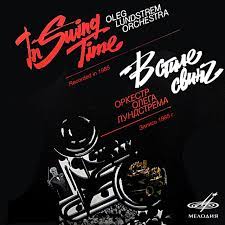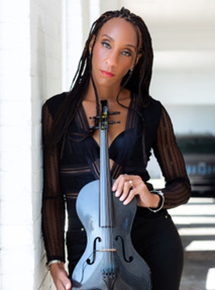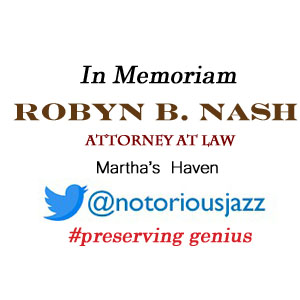
Daily Dose Of Jazz…
Oleg Leonidovich Lundstrem was born April 2, 1916 into a family of musicians in Chita, Transbaikal Oblast. His family moved to Harbin, China when he was five. By 1935, inspired by Duke Ellington’s Dear Old Southland record which he purchased, he joined forces with eight other young Russian amateur musicians and formed the Oleg Lundstrem Orchestra. The following year the band moved to Shanghai, China where they immediately became popular among the public. The band was an important part of Shanghai’s jazz scene until 1947, along with Buck Clayton Orchestra.
After World War II, in 1947 Oleg returned to the Soviet Union and settled in Kazan, where he worked as a violinist in the opera and ballet theatre, while keeping his jazz orchestra as a side act. 1956 saw the Oleg Lundstrem Orchestra moving to Moscow where he was appointed by the Soviet cultural authorities as the orchestra’s art director and conductor.
His orchestra was recognized by the Guinness Book of Records as the oldest continuously existing jazz band in the world, the official name being The State Oleg Lundstrem Chamber Orchestra of Jazz Music.
Composer and conductor Oleg Lundstrem, also spelled Lundstroem or Lundström, transitioned from natural causes at his home on October 14, 2005 in Korolyov, Moscow Oblast at the age of 89.
More Posts: bandleader,composer,conductor,history,instrumental,jazz,music,violin

LESLIE DESHAZOR
2021 MPower Grant Recipient and 2021TedX speaker Leslie DeShazor was named one of thirty Professional Movers and Shakers in the Performing Arts by Musical America in 2019. Violist, violinist, composer and arranger Leslie DeShazor is in demand as a soloist, teacher and recording artist. Though classically trained, Mrs. DeShazor is a talented and diverse musician. As a soloist, she has performed with the Toledo Symphony. She is a freelance artists who performs and has performed with The Sphinx Symphony Orchestra, Michigan Opera Theatre Orchestra, Michigan Sinfonietta, CutTime Simfonica, Detroit Symphony Orchestra, Gateways Orchestra, Flint Symphony, The River Raisin Ragtime Revue and Ann Arbor Symphony as well as jazz ensembles, Leigh Daniels Ensemble the Detroit-based, Musique Noire and Straight Ahead. She has performed and recorded with international, Grammy award winning R&B stars, Stevie Wonder, Smokey Robinson, and Aretha Franklin and Grammy award winning gospel artists Fred Hammond, Michael W. Smith and Donnie McClurkin. She has also had the pleasure of performing with jazz greats such as Roy Hargrove, Steve Wilson, Pat Metheny, Sheila Jordan, Diane Schuur, Regina Carter, Xavier Davis and Marcus Belgrave. She has recently expanded her versatility musically playing both viola and violin as a part of award winning hit musicals Hamilton and Hello Dolly. An experienced instructor, she currently teaches students of Detroit with instructional music programs offered through the Detroit Symphony Orchestra, the Sphinx Organization and her own private studio. A native of Michigan, Mrs. DeShazor holds a bachelor’s degree from the University of Michigan.
SEATING TIMES:
Wednesday – Thursday
1 Seating
Seating: 6:00pm-8:30pm
Band Performs: 7:00pm-8:30pm
Friday – Saturday
2 Seatings
1st Seating: 6:00pm-8:00pm
Band Performs: 6:30pm-7:30pm
2nd Seating: 8:30pm-10:30pm
Band Performs: 9:00pm-10:00pm
More Posts: adventure,album,club,festival,genius,jazz,museum,music,preserving,restaurant,travel,violin

Daily Dose Of Jazz…
Frank Teschemacher was born on March 13, 1906 in Kansas City, Missouri. A was a member of the Austin High School Gang, a group of young, white musicians from the Chicago, Illinois West Side, they all attended Austin High School during the early 1920s. They rose to prominence as pioneers of the Chicago Style in the 1920s, which was modeled on a faster version of New Orleans jazz.
Strongly influenced by cornetist Bix Beiderbecke, he was mainly self-taught on his instruments, clarinet and saxophone. Early on he also doubled on violin and banjo. He started playing the clarinet professionally in 1925. He began recording under his own name in 1928 and made what are believed to be his final recordings two years later, although there is now reason to believe (via sine wave recording research, aka Smith/Westbrook Method) that he appeared on unidentified recordings as late as 1932.
He first recorded with Red McKenzie and Eddie Condon’s Chicagoans in 1927 for Okeh Records. Two sessions produced Sugar, China Boy, Nobody’s Sweetheart and Liza. The players included Jimmy McPartland, Bud Freeman, and Jim Lanigan, as well as Chicagoans Eddie Condon, Gene Krupa and Joe Sullivan, led by Red McKenzie.
1928 saw him recording with two other Red McKenzie and Eddie Condon groups, the Chicago Rhythm Kings and the Jungle Kings. The same year he made his debut as a leader recording for Brunswick Records. The group recorded under the name Frank Teschmacher’s Chicagoans. Frank’s solo work laid the groundwork for a rich sound and creative approach that is credited with influencing a young Benny Goodman and a style of which Pee Wee Russell. He also made recordings on the saxophone and would later return to the violin during the Great Depression. Although well known in the world of jazz, he did not live to enjoy popular success in the swing era.
Clarinet and alto saxophonist Frank Teschemacher, who was killed in an automobile accident while being driven by Wild Bill Davison, transitioned on March 1, 1932 at the age of 25.
More Posts: clarinet,history,instrumental,jazz,music,saxophone,violin

Daily Dose Of Jazz…
Fernand Coppieters was born in Brussels, Belgium on March 3, 1905. He took up piano in his youth and also played the Hammond organ. His first professional work was with the ensemble Bistrouille ADO in 1920 at age 15. Following this, he played in the Red Mills Ragtime Band and the Rhythmic Novelty Dance Orchestra.
Leaving Belgium for France he landed a place in Fud Candrix’s ensemble in France and Holland. Returning to Brussels in 1929, he played in a trio with René Compère and again with Candrix. Soon after this, he joined the 16 Baker Boys, led by Robert de Kers and, later, Oscar Aleman.
In the early 1930s, he accompanied Josephine Baker on tours of Europe, then worked with Roland Dorsay, Candrix once again, and Willie Lewis. In the 1940s and 1950s, he recorded as a leader and worked as a house pianist for Radio Schaerbeek, an independent Belgian radio station.
In the late 1950s and 1960s, he recorded several albums on Hammond organ, for Fontana Records and Philips Records. Pianist and organist Fernand Coppieters, who also played accordion, saxophone, and violin, transitioned on September 9, 1981 in Brussels.
More Posts: accordion,bandleader,history,instrumental,jazz,music,organ,piano,saxophone,violin

Daily Dose Of Jazz…
LaDonna Smith was born on March 2, 1951 in Birmingham, Alabama. She learned to play violin and went on to perfect viola and piano. Since 1974 she has been performing free improvisational music with musicians Davey Williams, Leland Davis, Michael Evans, Gunther Christmann, Anne Lebaron, Derek Bailey, Eugene Chadbourne, Misha Feigin, Michael Evans, David Sait, Jack Wright, John Russell, Sergey Letov, Toshi Makihara, Andrew Dewar and many other world major improvisers.
As a performer, she has toured the United States, Canada, Europe, Russia, Siberia, Korea, India, China and Japan. She produced concerts and festivals in Alabama and the Southeast, including the Birmingham Improv Festival and The Improvisor Festival. She serves on the Board of Directors of the International Society of Improvised Music (I.S.I.M.).
In 1976, Smith co-founded TransMuseq Records with Davey Williams. She is editor-in-chief and publisher of The Improvisor magazine which began in 1980 as an extension of The Improvisor’s Network, a grass-roots organization in New York City that attempted to connect improvising musicians across America. She is a member of the Fresh-Dirt collective (Alabama Surrealism).
Avant garde violinist, violist, and pianist LaDonna Smith, who has recorded 37 albums, continues to perform and record.
More Posts: bandleader,history,instrumental,jazz,music,piano,viola,violin




